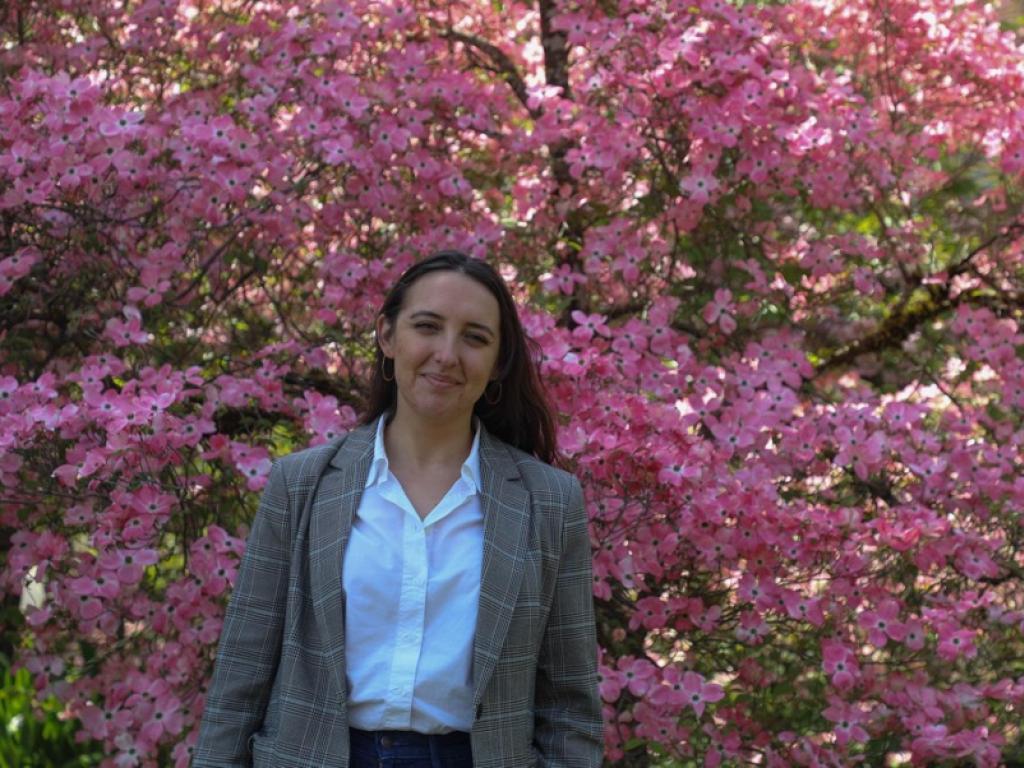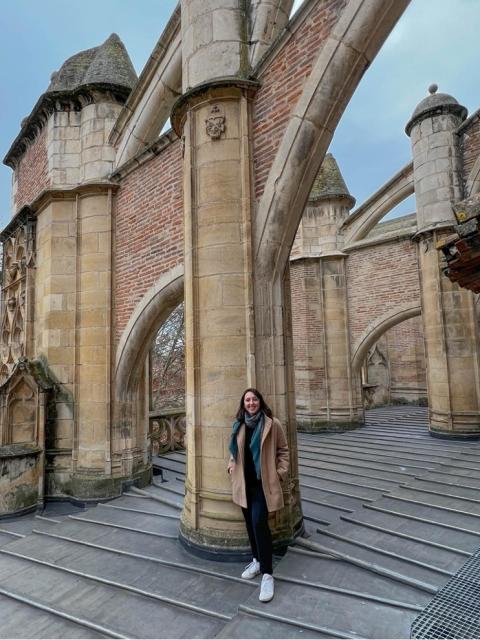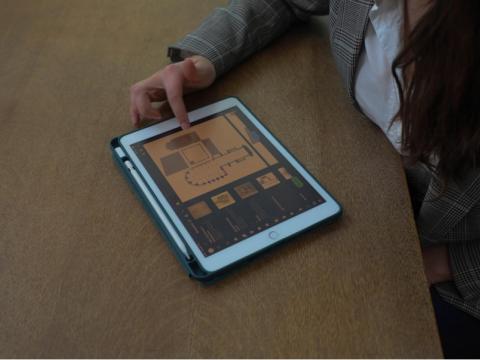
Editor's note: This article was produced by a student participating in the course J477/577: Strategic Science Communication, a collaboration between the School of Journalism and Communication’s Science Communication Minor program and the Research Communications unit in the Office of the Vice President for Research and Innovation.
When discussing architecture, the usual focus is on the construction techniques and artistic elements of structures. But have you ever thought about the people who inhabited and interacted in these spaces while they were being built? Gabriela Chitwood, a doctoral candidate in the Department of Art History who specializes in medieval architecture, delves into this intriguing aspect of past human occupation through her studies at the Toulouse Cathedral.
"I work mostly on cathedrals, studying how they are built. But there's a gap in the studies; we don't talk very often about the people who use the space while it's being built," Chitwood said. "Cathedrals can take decades, even centuries, to complete, which means that several generations of people would have been using an incomplete structure."
The Toulouse cathedral took almost 500 years to build, meaning many generations between the 13th and 17th centuries used it in a partially completed state. Gabriela chose to study the Toulouse cathedral because of its unique structure and for its prolonged construction.

“The first phase of construction or “building” started in the early 13th century," Chitwood said. "A few decades after it was completed, the new bishop started a new building project just to the north of the first building. It was meant to eventually replace the entire older church, but for the majority of the cathedral’s history since, the two were connected. They are both of drastically different scales and styles.”
The ways in which various groups of people interacted with the cathedral at different times is the pillar of Gabriela’s research.
The canons or priests, who directed religious events, were central figures in the functioning of the cathedral. They performed everyday masses and prayers throughout the day. They were immersed in these practices, with religious services taking place at least five to eight times daily.
In addition, special masses were held in honor of different saints. In her research, Chitwood has specifically examined the case of John the Baptist and how the procession for his feast day was organized during the construction phase of the cathedral. Chitwood has also looked at how other individuals engage with the cathedral.
"Now, in another part of the project, I am exploring the experience of the laity, how ordinary people, you and I, would participate in the life of the church,” Chitwood said. “My goal is to identify these specific moments and the people involved in them."
One of the main obstacles in the research is the analysis of historical texts and documents since most are in Latin and Old French. "It's like putting together a jigsaw puzzle," Chitwood said. "But each document gives us a unique insight into daily life in the cathedral."
Gabriela's research sheds even more light on the relationship between medieval society and its architectural environment.
"I want to show how normal this situation was," she said. "Many people didn't have a full cathedral for most of their lives. I hope my work will help paint a fuller picture of daily life in these spaces."
Translated into modern life
In discussing the relevance of her work to modern projects, Chitwood reflects on the shared experience of building. "We've all experienced the discomfort of building sites in our modern lives," she said. "But for people in the Middle Ages, building a cathedral was a constant reality for several generations."

Using architectural reconstruction technologies, such as CAD software, Chitwood has managed to digitally recreate the evolution of Toulouse Cathedral over the centuries. These reconstructions make it possible to visualize how the structure has changed over time, from its early stages of construction to its current state.
In addition, Chitwood explores the concept of ‘vertical archaeology’, a technique that examines the historical layers of architecture to trace the different periods of construction and remodeling. This tool is used to understand the structure and complete the CAD reconstruction.
By combining these tools with the analysis of archival documents, Chitwood has been able to shed light on key moments in the history of the cathedral and the lives of those who inhabited it.
Chitwood will return to Toulouse this fall to continue her research after receiving the Medieval Academy of America’s Baldwin Fellowship in recognition of her work.
"I hope that my work will not only contribute to academic knowledge but also help people better understand our connection to the medieval past through architecture," she said.
Gabriela Chitwood's research invites us to look beyond the stones and stained glass windows of the cathedral to discover the stories of the people who lived and worshiped inside these majestic structures under construction.
